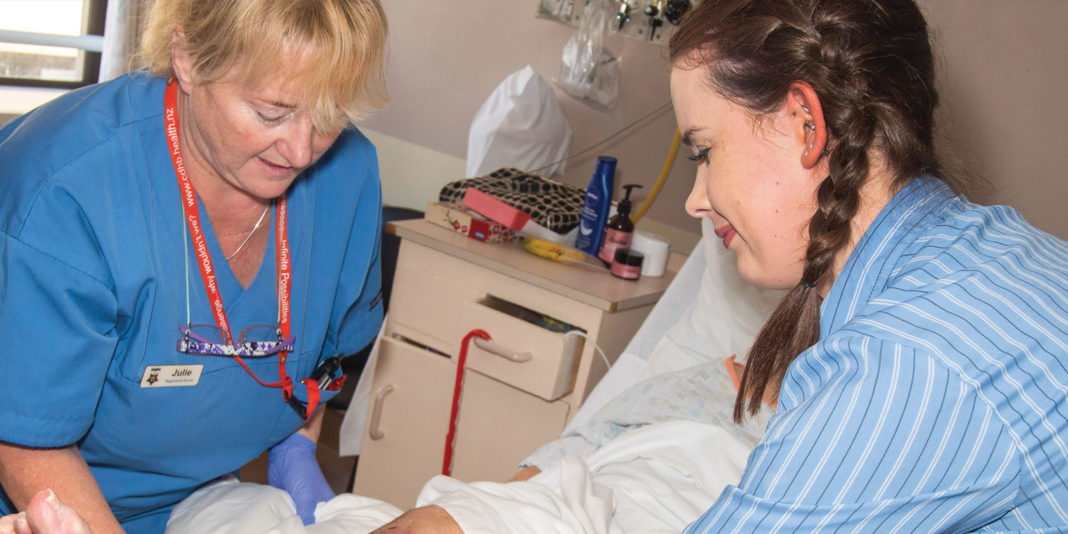Orthopaedic nurse Julie Isitt aims to treat her patients like they were relatives – and she’d hate to have any of her family members suffer a pressure injury.
Each year around 55,000 people get pressure injuries (PIs), once known as bedsores or pressure ulcers, ranging from an early-stage reddened patch over a pressure point, like a heel, to gaping wounds to the bone from which people can die.
Isitt and Nurse Maude district nurse Jade Lippiatt (pictured above), are two of the more than 50 nurses across the Canterbury and West Coast DHB regions who have successfully applied to become pressure injury prevention link nurses.
The new link nurse role is supported by a $6 million, three-year ACC campaign to reduce preventable PIs that kickstarted with Canterbury DHB last year and will see other regional initiatives rolled out nationwide.
It is part of the momentum that has built after years of lobbying by wound care nurses and the New Zealand Wound Care Society for PIs to be taken seriously at a national level. PIs are regarded as a quality marker of care because the risk rises when care rationing due to understaffing or lack of awareness results in patients not being moved in bed or having their skin assessed regularly enough.
This month the first quarterly reports on pressure injuries are being lodged with the Health Quality & Safety Commission by DHBs as a new joint strategy by the Commission, Ministry of Health and ACC steps up a notch.
The strategy follows a major 2015 report commissioned by KPMG on reducing PI harm, which estimated that about 3,000 of, the 55,000 people will have a PI wound so severe that muscles, bones or tendons may be exposed, requiring surgery to treat and repair the skin and tissue damage.
The DHB quality and safety marker reports will help to build the first solid, nationally consistent statistics on the scale of the problem and help to monitor the impacts of prevention strategies.
Link nurses
Julie Isitt has worked in orthopaedics for 16 years and says it is changes in the patients she cares for in the past five years that has increased her awareness of the risk of PIs.
An increasing number of older people are coming into hospital with complex co-morbidities like diabetes or dementia and less mobility, which has made her conscious of the need to turn and move patients at risk of PIs.
Jade Lippiatt first started working in older people’s health after graduating four years ago. After seeing the impact of PIs, she was motivated to become a link nurse to help stop these preventable injuries.
The aim of the Canterbury/West Coast initiative is to have 72 pressure injury prevention link nurses – one in every ward and aged residential care facility, plus one to two from each of the district nursing providers.
Susan Wood, a nurse and the Director of Quality and Patient Safety, Canterbury and West Coast DHBs, says the link nurse role is based on a UK concept to develop the skills of a network of nurses in a specialty area, in this case pressure injuries. And in turn, the link nurses can act as change agents in their own workplaces with an expectation they will drive PI quality improvement programmes in their workplaces.
The voluntary link nurses are expected to be at a proficient PDRP level and to have already completed an online PI prevention course. In return, they are funded to complete a three-day PI prevention and management paper at Ara Institute of Canterbury and meet once a month to network and support each other in their PI prevention work.





















